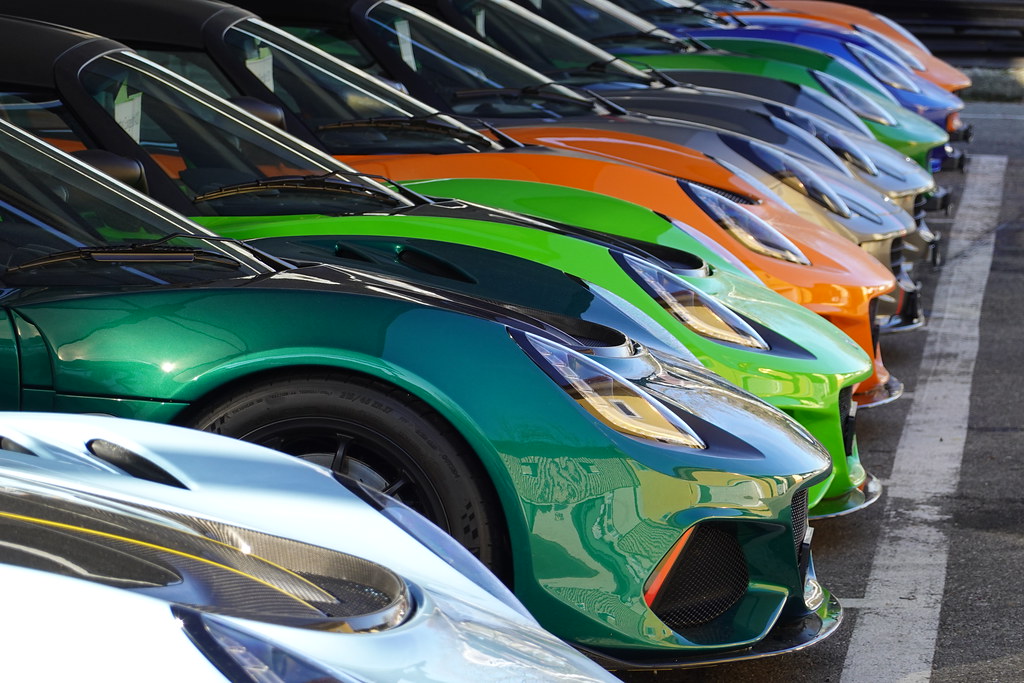
When it comes to buying a car, most people focus on factors like style, price, fuel economy, and even brand prestige. However, one of the most critical aspects often overlooked by everyday buyers is the vehicle’s mechanical reliability and ease of maintenance — something that professional mechanics understand better than anyone else. After all, we spend our days diagnosing, repairing, and maintaining vehicles of all makes and models, giving us a unique, hands-on perspective on which cars stand the test of time and which ones are a constant source of headaches.
Our insights are truly invaluable for anyone looking to make a smart, cost-effective decision that will save money and stress in the long run. Choosing the right car isn’t just about how it looks or how fast it accelerates; it’s about how the vehicle performs under real-world conditions, how often it breaks down, and how expensive and difficult it is to repair. Vehicles that are known for their reliability tend to have simpler designs, better build quality, and a well-supported network for parts and repairs. It’s about peace of mind, not just pavement presence.
In this in-depth article, we’re pulling back the curtain to share the real-world wisdom from the garages, workshops, and service bays where the true stories of these cars unfold. We’ll be exploring both sides of the automotive coin: starting with five cars that mechanics love and highly recommend for their unwavering reliability and straightforward ease of service, then diving into five cars that mechanics often warn against due to their frequent problems and costly repairs. Get ready to navigate the complex world of car ownership with expert knowledge that aims to save you from future headaches and unexpected expenses!
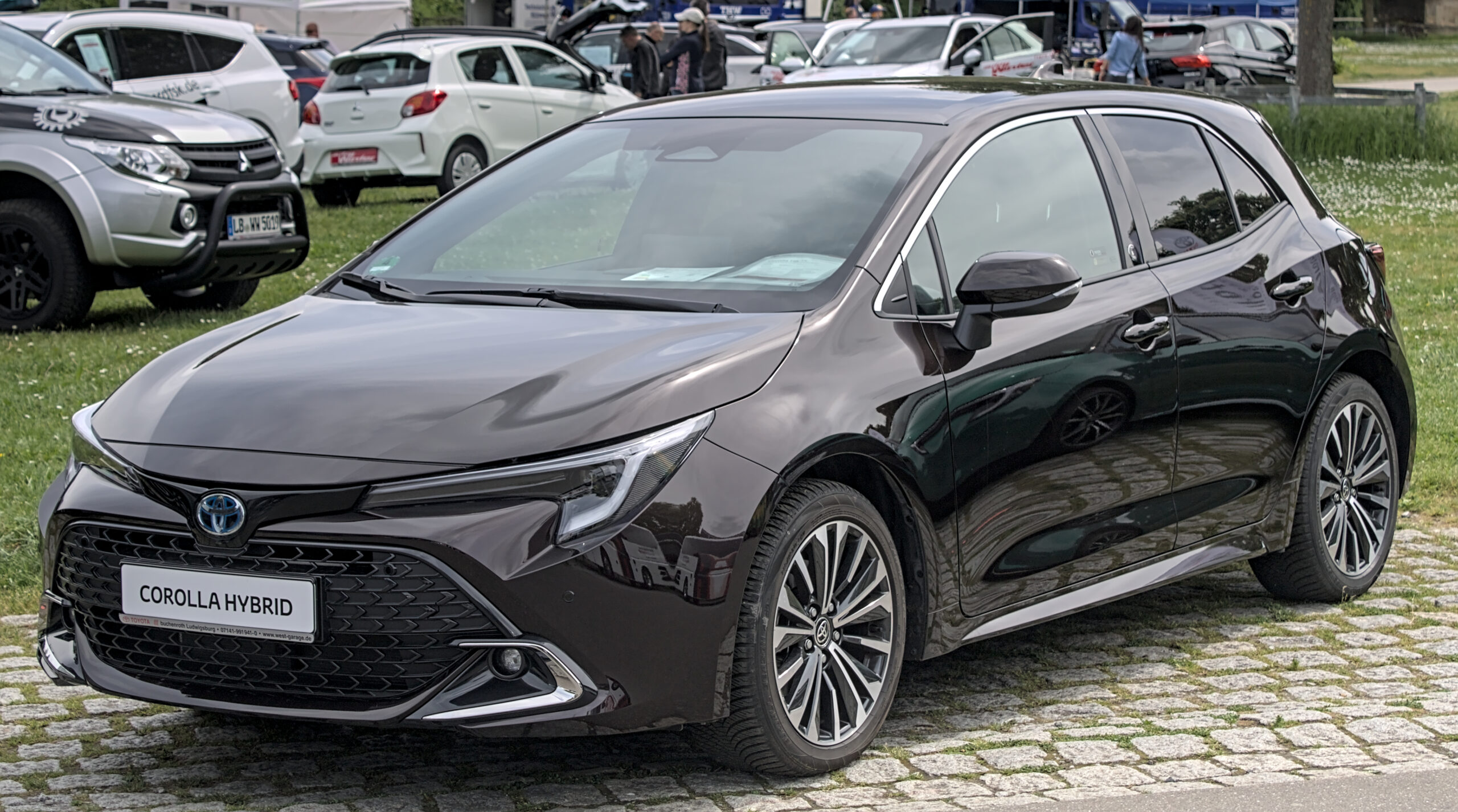
1. **Toyota Corolla**The Toyota Corolla has rightfully earned its stellar reputation as one of the most reliable and easiest-to-maintain cars globally, a fact that mechanics have enthusiastically endorsed for decades. Its engineering philosophy leans heavily towards durability and simplicity, rather than flashy or overly complicated technology. This design choice directly translates into tangible benefits for both drivers and the mechanics who service them, making it a perennial favorite in any shop.
Under the hood, the Corolla’s engines, typically inline-four cylinders, often feature solid timing chains instead of belts in many models. This significantly reduces the need for frequent replacements and extensive maintenance, offering drivers a robust and dependable powertrain. Toyota’s meticulous selection of components further ensures a vehicle that handles years of regular driving without succumbing to significant failures, a testament to its enduring quality.
Mechanics frequently highlight the straightforward accessibility of key parts, such as spark plugs, fuel injectors, and filters. This thoughtful design speeds up routine service tasks and, crucially, reduces labor costs for owners. Beyond the engine bay, the body and chassis are engineered to be resilient against rust and general wear, further extending the car’s lifespan and solidifying its reputation for longevity.
In terms of parts availability, the Corolla absolutely shines. Toyota’s vast global presence means that spare parts are not only plentiful but also consistently reasonably priced, a welcome relief for any car owner. This widespread accessibility makes repairs more straightforward and cost-effective for both independent mechanics and dealership service centers alike. With so many Corollas on the road, there’s a deep, well-developed knowledge base among technicians, leading to faster diagnostics and better repair outcomes. It’s common to spot Corollas cruising past the 300,000-mile mark, a living testament to Toyota’s unwavering commitment to quality and engineering excellence.
The Corolla’s widespread appeal also stems from its impressive fuel efficiency and overall cost-effectiveness, making it a beloved choice among both mechanics and everyday drivers seeking a reliable commuter. Its engines are meticulously designed for balance, providing ample power for daily use while prioritizing low fuel consumption and minimal emissions. Mechanics appreciate that this balance is achieved without sacrificing reliability, as some fuel-efficient models from other manufacturers tend to rely on turbocharged engines that often introduce increased complexity and potential points of failure. This steadfast commitment to a straightforward, dependable design means less time in the shop and more time on the road, cementing the Corolla’s status as a true automotive workhorse.
Car Model Information: 2024 Toyota Corolla SE
Name: Toyota Corolla
Caption: Twelfth generation model (2020, hatchback)
Manufacturer: Toyota
Aka: unbulleted list
Production: November 1966 – present
Class: unbulleted list
Predecessor: Toyota Publica
Categories: 1970s cars, 1980s cars, 1990s cars, 2000s cars, 2010s cars
Summary: The Toyota Corolla is a series of compact cars (formerly subcompact) manufactured and marketed globally by the Japanese automaker Toyota Motor Corporation. Introduced in 1966, the Corolla has been the world’s best-selling automobile of all time since 1997, when it surpassed the Volkswagen Beetle. Toyota reached the milestone of 50 million Corollas sold over twelve generations in 2021. The name Corolla is part of Toyota’s naming tradition of using names derived from the Toyota Crown for sedans, with “corolla” Latin for “small crown”. The Corolla has always been exclusive in Japan to Toyota Corolla Store locations, and manufactured in Japan with a twin, called the Toyota Sprinter until 2000. From 2006 to 2018 in Japan and much of the world, and from 2018 to 2020 in Taiwan, the hatchback companion had been called the Toyota Auris. Early models were mostly rear-wheel drive, while later models have been front-wheel drive. Four-wheel drive versions have also been produced, and it has undergone several major redesigns. The Corolla’s traditional competitors have been the Nissan Sunny, introduced the same year as the Corolla in Japan and the later Nissan Sentra, Subaru Leone, Honda Civic and Mitsubishi Lancer. The Corolla’s chassis designation code is “E”, as described in Toyota’s chassis and engine codes.
Get more information about: Toyota Corolla
Buying a high-performing used car >>>
Brand: Toyota Model: Corolla
Price: $23,495 Mileage: 17,965 mi.
Read more about: Unpacking Tesla’s ‘Closed Glass Roof’: The Model Y Standard’s Controversial Panoramic Secret and What It Means for Buyers
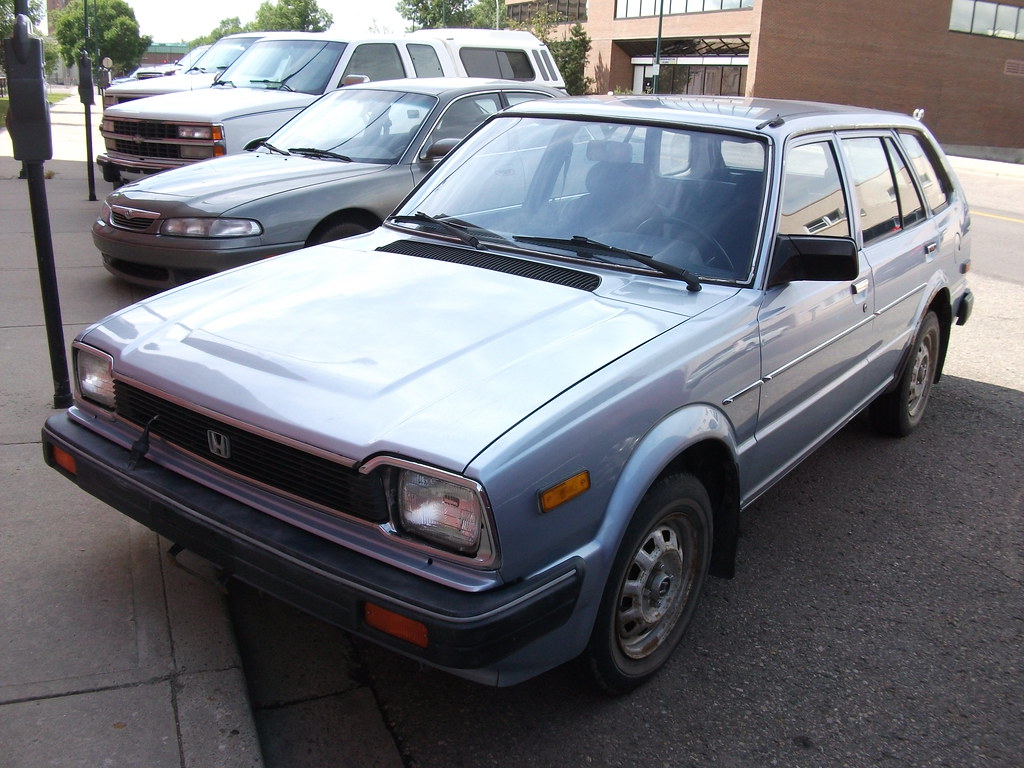
2. **Honda Civic**The Honda Civic consistently earns high praise from mechanics, standing proudly as one of the most robust and well-engineered compact cars available, a true peer to the Toyota Corolla in reliability and ease of maintenance. Mechanics hold a deep appreciation for Honda’s philosophy of designing engines with both simplicity and durability at their core. Many of the early and mid-2000s Civics, for example, boast naturally aspirated inline-four engines equipped with timing chains rather than belts, effectively reducing the risk of sudden failures and eliminating the need for expensive replacements that often plague other vehicles.
The Civic’s drivetrain components are thoughtfully arranged, providing relatively easy access to critical parts such as spark plugs, oxygen sensors, and water pumps. This intelligent layout makes routine maintenance tasks considerably less arduous, saving both time and money. Furthermore, the Civic’s design incorporates a strong focus on mechanical soundness and longevity. Mechanics frequently commend the car for its remarkable ability to consistently perform well beyond 200,000 miles, provided it receives proper, timely maintenance.
One significant factor contributing to this impressive longevity is Honda’s steadfast commitment to building engines that don’t just perform admirably when new, but are specifically engineered to withstand the inevitable wear and tear of long-term use. The transmissions, especially the manual versions, are renowned for their exceptional durability. Even the automatic transmissions tend to hold up remarkably well when regularly serviced, showcasing Honda’s robust engineering. These inherent characteristics make the Civic not only a joy for mechanics to work on but also an incredibly smart and dependable choice for buyers seeking a vehicle they can truly rely on.
Parts availability is yet another crucial element in the Civic’s mechanic-friendly reputation. Honda’s extensive production footprint and robust aftermarket support mean that replacement components are both affordable and remarkably easy to locate, even for older models. This widespread accessibility significantly reduces repair wait times and lowers overall service costs, a huge win for owners. The Civic also enjoys immense popularity worldwide, fostering a vast and active community of enthusiasts and professional technicians who readily share invaluable insights and proven repair techniques. This wealth of shared knowledge greatly benefits mechanics, making it easier to troubleshoot uncommon issues and source parts quickly, ensuring a swift return to the road.
Car Model Information: 2024 Honda Civic EX-L
Caption: 2024 Honda Civic liftback
Manufacturer: Honda
Aka: ubl
Production: 1972–present
Class: Subcompact car
BodyStyle: fastback,Sedan (automobile)
Layout: Front-engine, front-wheel-drive layout,Front-engine, four-wheel-drive layout
Predecessor: Honda N600,Honda Z600
Categories: 1980s cars, 1990s cars, 2000s cars, 2010s cars, 2020s cars
Summary: The Honda Civic is a series of automobiles manufactured by Honda since 1972. As of 2023, the Civic is positioned between the Honda Fit/City and Honda Accord in Honda’s global passenger car line-up. It is one of the best-selling automobiles in history, with over 27 million units sold through 2021. The first-generation Civic was introduced in July 1972 as a two-door fastback sedan, followed by a three-door hatchback that September. With a 1,169 cc transverse engine and front-wheel drive, the car provided good interior space despite its small overall dimensions. Initially gaining a reputation for being fuel-efficient, reliable and environmentally friendly, later iterations have become known for performance and sportiness, especially the Civic Si, SiR, and Type R versions. It is currently in its eleventh generation, which has been produced since 2021. The Civic has often been rebadged for international markets, and it served as the basis for the Honda CR-X, the Honda CR-X del Sol, the Concerto, the first generation Prelude, the Civic Shuttle (which later became the Orthia) and the CR-V (which in turn was used as the basis for the Honda FR-V).
Get more information about: Honda Civic
Buying a high-performing used car >>>
Brand: Honda Model: Civic
Price: $25,080 Mileage: 31,016 mi.
Read more about: Navigating the Nuances: 10 Cars with the Most Reliable CVT Transmissions in 2025

3. **Ford F-150**In the rugged world of pickup trucks, the Ford F-150 has achieved near-legendary status among mechanics, celebrated for its unwavering durability, straightforward engineering, and refreshing ease of repair. This isn’t just a truck; it’s a testament to robust design. The F-150 is meticulously engineered to tackle heavy workloads and endure harsh conditions, which means its components are often overbuilt. This intentional overengineering translates directly into fewer breakdowns and parts that simply last longer, a quality profoundly appreciated by mechanics who regularly service these workhorses. Older models, in particular, are highly prized for their simple yet exceptionally durable V8 and V6 engines, which deliver ample power and are generally quite forgiving even when maintenance lapses occasionally occur.
The sheer popularity of the F-150 is another colossal reason why mechanics favor it so highly. With millions of F-Series trucks traversing roads globally, parts availability is nothing short of outstanding. From basic brake pads and oil filters to more complex engine assemblies, replacement parts can be sourced swiftly and affordably. This widespread availability not only keeps repair costs incredibly reasonable but also critically minimizes downtime, which is paramount for owners who depend on their trucks for their livelihoods. Mechanics also frequently point to the F-150’s chassis and suspension design as being notably easier to service compared to some more modern trucks that integrate complex air suspensions or intricate electronic systems. The more straightforward the design, the quicker and more efficiently mechanics can perform routine maintenance or tackle significant repairs, benefiting both the service shop and, most importantly, the vehicle owner.
Furthermore, the Ford F-150’s sterling reputation for reliability is solidly backed by decades of comprehensive field data, unequivocally demonstrating that these trucks can effortlessly accumulate hundreds of thousands of miles without encountering major mechanical failures. Mechanics consistently remark on the solid build quality and the meticulous attention to detail that Ford consistently incorporates into these trucks. This ranges from the incredibly durable engine components designed for grueling tasks to the robust transmissions that confidently handle demanding towing and hauling operations without breaking a sweat. It’s a vehicle built to perform, day in and day out, proving its worth over the long haul.
Even newer F-150 models maintain a commendable balance between incorporating cutting-edge modern technology and steadfastly retaining their fundamental mechanical reliability. While innovations are welcome, mechanics often wisely recommend sticking with specific engine options that have already proven their exceptional longevity and track record of consistent performance. This blend of innovation and proven dependability ensures the F-150 remains a top choice for those needing a powerful, reliable, and enduring truck that won’t consistently demand costly interventions. Its enduring presence in the market is a testament to its design and utility.
Car Model Information: 2025 Ford F-150 STX
Name: Ford F-Series
Caption: 2022 Ford F-150 Lariat Luxury
Manufacturer: Ford Motor Company
Aka: Ford Lobo (Mexico, 1992–present)
Production: 1948–present
Class: Pickup truck#Full-size pickup truck
Layout: Front-engine, rear-wheel-drive layout,rear-wheel drive
Predecessor: 1941 Ford
Categories: All-wheel-drive vehicles, All Wikipedia articles written in American English, All articles that may contain original research, All articles with unsourced statements, Articles that may contain original research from September 2020
Summary: The Ford F-Series is a series of light-duty trucks marketed and manufactured by the Ford Motor Company since model year 1948 as a range of full-sized pickup trucks — positioned between Ford’s Ranger and Super Duty pickup trucks. Alongside the F-150 (introduced in 1975), the F-Series also includes the Super Duty series (introduced in 1999), which includes the heavier-duty F-250 through F-450 pickups, F-450/F-550 chassis cabs, and F-600/F-650/F-750 Class 6–8 commercial trucks.
Get more information about: Ford F-Series
Buying a high-performing used car >>>
Brand: Ford Model: F-150
Price: $44,991 Mileage: 4,848 mi.
Read more about: 15 Iconic Rides: Celebrities Who Prove Old School Wheels Get Better With Age!
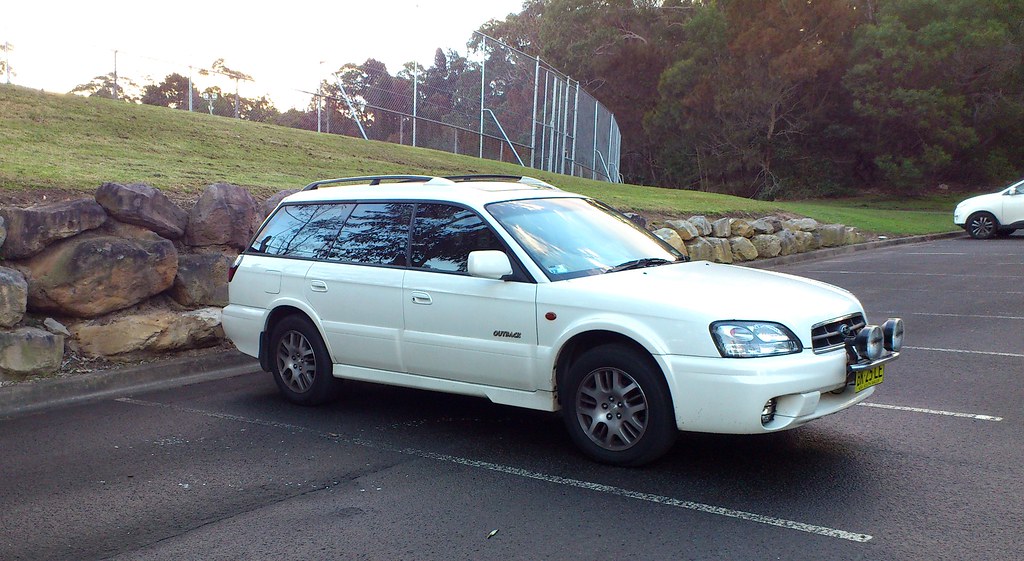
4. **Subaru Outback**Subaru has carved out a unique and highly respected niche in the automotive world, primarily thanks to its signature all-wheel-drive system. This symmetrical AWD system is not just a marketing gimmick; it genuinely enhances a car’s safety and provides superior strength, particularly when navigating adverse weather conditions. For mechanics, this robust engineering means fewer calls related to traction control failures or drivetrain issues, which is a major positive. The Outback, alongside the Forester, stands out as one of Subaru’s most reliable models, consistently impressing professionals in the field.
Mechanics frequently attest that Subaru vehicles are constructed using high-quality materials throughout. This commitment to superior components translates directly into vehicles that are less prone to premature wear and tear. It’s this meticulous attention to detail in material selection that contributes significantly to Subaru’s enduring reliability. When a car is built with better parts, it simply holds up better over time, requiring less intensive, unexpected repairs.
The Subaru Outback’s reputation as a reliable car brand according to mechanics isn’t just anecdotal; it’s rooted in its consistent performance and ability to maintain its integrity over many years. Experts like Jason Fenske often highlight the smart design and the impressively long life expectancy of Subaru cars. This smart design encompasses not just the AWD system, but also how the engine and transmission are integrated, creating a cohesive and resilient vehicle system.
The unique selling point of Subaru’s AWD system, its practical benefits for everyday drivers, and those needing robust performance in varied conditions cannot be overstated. This unwavering focus on core functionality and safety features contributes immensely to its approval among mechanics. They appreciate a vehicle that delivers on its promises, especially when those promises are about getting through tough situations without major mechanical distress, making it a less frequent visitor to the repair shop for major problems compared to its peers.
Car Model Information: 2013 Subaru Outback 2.5i Limited
Name: Subaru Outback
Caption: 2023 Subaru Outback Premium
Manufacturer: Subaru
Production: 1994–present
ModelYears: 1995–present
Assembly: Ota, Gunma
Aka: Subaru Legacy
Class: Mid-size car
BodyStyle: station wagon
Categories: All Wikipedia articles written in American English, All articles with unsourced statements, Articles containing Japanese-language text, Articles with short description, Articles with unsourced statements from April 2012
Summary: The Subaru Outback is an automotive nameplate used by the Japanese automaker Subaru for two different themed vehicles: a Legacy-derived station wagon, the Outback (1994–present, also sold as Legacy Outback in some markets), and an Impreza-derived off-road themed hatchback, the Outback Sport (1994–2011). Most versions of the Outback wagon and Outback Sport have had all-wheel drive as standard equipment.
Get more information about: Subaru Outback
Buying a high-performing used car >>>
Brand: Subaru Model: Outback
Price: $7,795 Mileage: 175,533 mi.
Read more about: Navigating the Nuances: 10 Cars with the Most Reliable CVT Transmissions in 2025
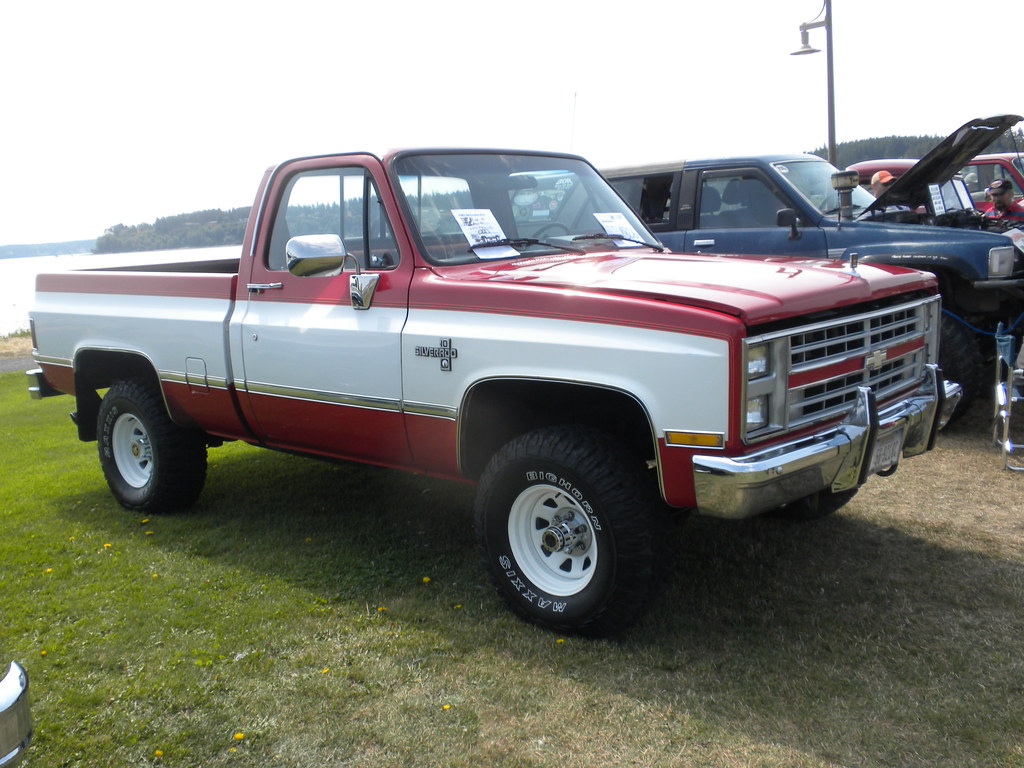
5. **Chevrolet Silverado**When it comes to sturdy, dependable workhorses, Chevrolet has long been recognized for its robust lineup of trucks and SUVs. Among these, the Chevrolet Silverado stands out as a consistently popular model, earning high marks from mechanics who appreciate its inherent toughness and ability to handle demanding tasks. These trucks are engineered with a clear purpose: to take a significant amount of use and abuse, making them ideal companions for heavy work or extensive family trips.
Mechanics consistently observe that these vehicles, particularly the Silverado, possess remarkable longevity, especially when owners commit to regular, attentive care. This isn’t just about surviving; it’s about thriving through years of hauling, towing, and daily driving. The inherent strength of Chevrolet trucks is often highlighted by car experts like Scotty Kilmer, who frequently praises their resilience and capacity to endure. This makes Chevrolet a truly reliable car brand according to mechanics, especially for individuals or businesses that absolutely need a tough, unyielding vehicle capable of performing under pressure.
The Silverado’s robust construction isn’t just for show; it’s reflected in its engine and chassis durability. Mechanics appreciate vehicles that are purpose-built and do not prematurely fail under expected loads, and the Silverado definitely fits that bill. Its ability to maintain structural and mechanical integrity under strenuous conditions means fewer major repair jobs, translating to more uptime for owners who rely on their trucks daily for work or essential family transportation.
Another significant advantage of the Silverado’s widespread popularity is the excellent availability of parts. Because so many Silverados are on the road, components are generally easy to source, and mechanics are intimately familiar with any common issues, which tend to be minimal due to the truck’s robust design. This familiarity allows for quicker, more confident diagnostics and repairs, further reducing ownership costs and ensuring that a trusted vehicle like the Silverado spends more time working for you and less time sitting in the shop.
Having explored the steadfast champions that mechanics wholeheartedly endorse, it’s now time to flip the coin and shed light on the vehicles that often become a mechanic’s—and an owner’s—headache. These are the cars that, despite their initial allure or specific design features, frequently land in the repair shop, demanding costly interventions and delivering frustrating ownership experiences. Understanding these pitfalls is just as crucial as knowing the reliable stars, empowering you to avoid future automotive woes.
These vehicles, which mechanics frequently caution against, tend to be plagued with persistent mechanical and electrical issues. They might feature complex technology that breaks easily, have hard-to-access engine components, or suffer from poor build quality. For mechanics, these cars represent a significant challenge, involving lengthy repair times and difficult diagnostics. For owners, this translates directly into unpredictable breakdowns and a high cost of ownership, making them models you might want to steer clear of.
Car Model Information: 2022 Chevrolet Silverado 1500 LT
Name: Chevrolet Silverado/GMC Sierra
Caption: 2022 Silverado 2500HD High Country
Manufacturer: General Motors
Aka: unbulleted list
Production: 1998–present
Assembly: unbulleted list
Class: unbulleted list
BodyStyle: unbulleted list
Layout: unbulleted list
Predecessor: unbulleted list
Categories: 2000s cars, 2010s cars, 2020s cars, All-wheel-drive vehicles, All Wikipedia articles written in American English
Summary: The Chevrolet Silverado is a range of trucks manufactured by General Motors under the Chevrolet brand. Introduced for the 1999 model year, the Silverado is the successor to the long-running Chevrolet C/K model line. Taking its name from the top trim level from the Chevrolet C/K series, the Silverado is offered as a series of full-size pickup trucks, chassis cab trucks, and medium-duty trucks. The fourth generation of the model line was introduced for the 2019 model year.
The Chevrolet Silverado shares mechanical commonality with the identically related GMC Sierra; GMC ended the use of the C/K nomenclature a model generation prior to Chevrolet. In Mexico, high-trim level versions of the Silverado use the Chevrolet Cheyenne name (not to be confused with the 2003 concept). Competing against the Ford F-Series, Ram pickup, Toyota Tundra, and Nissan Titan, the Silverado is among the best-selling vehicles in the United States, having sold over 12 million trucks since its introduction in 1998 as a 1999 model year.
Get more information about: Chevrolet Silverado
Buying a high-performing used car >>>
Brand: Chevrolet Model: Silverado
Price: $34,990 Mileage: 38,882 mi.
Read more about: The Unwanted Symphony: MotorTrend’s Six Engines with the Most Divisive Sound Signatures
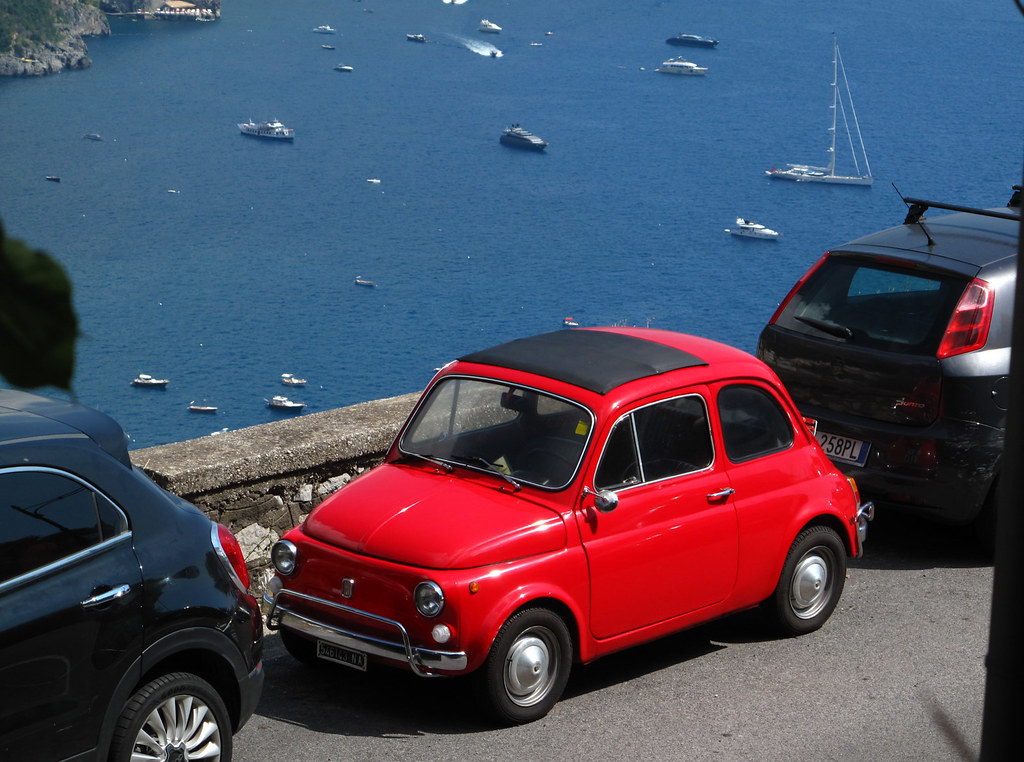
6. **Fiat 500**The Fiat 500, with its undeniably charming retro styling and compact footprint, often catches the eye of those seeking a stylish city car. Its initial appeal lies in its unique aesthetic and nimble maneuverability, making it seem like an ideal choice for urban adventurers. However, beneath this fashionable exterior, mechanics frequently encounter a different reality, marking it as a car that often falls into the ‘proceed with caution’ category.
Vehicles like the Fiat 500, while visually distinctive, sometimes exemplify the challenges that arise when style takes precedence over robust mechanical engineering. Mechanics report that these cars can exhibit a range of design flaws and employ subpar materials in critical areas, which unfortunately contribute to a less than stellar long-term reliability record. What starts as a delightful drive can, over time, evolve into a frustrating ownership experience, characterized by unexpected issues.
These underlying mechanical weaknesses often translate into more frequent trips to the repair shop. Mechanics find that components, particularly within the powertrain and electrical systems, can be prone to premature wear or unexpected failure. The compact nature of the vehicle’s design can also make certain repairs more difficult and time-consuming, as engine bays and other critical areas can be cramped and hard to access.
Consequently, the cost of maintaining a Fiat 500 can quickly become a significant financial burden. Diagnosing intricate issues can take considerable time, leading to higher labor costs. Furthermore, specialized parts might not be as readily available or as affordably priced as those for more common, mechanic-friendly brands, further inflating repair expenses and contributing to an overall high cost of ownership.
Car Model Information: 2013 FIAT 500 Abarth
Name: Fiat 500
Caption: 1970 Fiat 500 L
Aka: Puch 500
Manufacturer: Fiat Automobiles
Production: 1957–1975,3,893,294 units
Assembly: Turin,Desio
Designer: Dante Giacosa
Class: City car
BodyStyle: ubl
Layout: Rear-engine, rear-wheel drive layout
Doors: Suicide door,Car door#Conventional
Related: Autobianchi Bianchina,NSU/Fiat Weinsberg 500,Vignale Gamine,Autobianchi Giardiniera
Engine: Cubic centimetre,499 cc I2,594 cc I2
Transmission: Manual transmission
Wheelbase: {{convert,1840,mm,in,1,abbr=on
Abbr: on
Length: 2970 mm
Width: 1320 mm
Height: 1320 mm
Weight: 499 kg
Predecessor: Fiat 500 “Topolino”
Successor: Fiat 126,Fiat 500 (2007)
Sp: uk
Categories: 1960s cars, 1970s cars, All Wikipedia articles written in British English, All articles with unsourced statements, Articles containing Italian-language text
Summary: The Fiat 500 (Italian: Cinquecento, pronounced [ˌtʃiŋkweˈtʃɛnto]) is an economy / city car that was manufactured and marketed by Fiat Automobiles from 1957 until 1975. It was sold as a two-door semi-convertible or saloon car and as a three-door panel van or estate car.
Launched as the Nuova (new) 500 in July 1957, as a successor to the 500 “Topolino”, it was an inexpensive and practical small car. Measuring 2.97 metres (9 feet 9 inches) long, and originally powered by a rear-mounted 479 cc two-cylinder, air-cooled engine, the 500 was 24.5 centimetres (9.6 inches) smaller than Fiat’s 600, launched two years earlier, and is considered one of the first purpose-designed city cars.
In 1959, Dante Giacosa received a Compasso d’Oro industrial design prize for the Fiat 500. This marked the first time a Compasso d’Oro was awarded to an automotive manufacturer.
Get more information about: Fiat 500
Buying a high-performing used car >>>
Brand: Fiat Model: 500
Price: $11,995 Mileage: 35,182 mi.
Read more about: Buckle Up, Boomers! 12 Legendary Rides from Your Youth That Are STILL a Total Blast to Drive
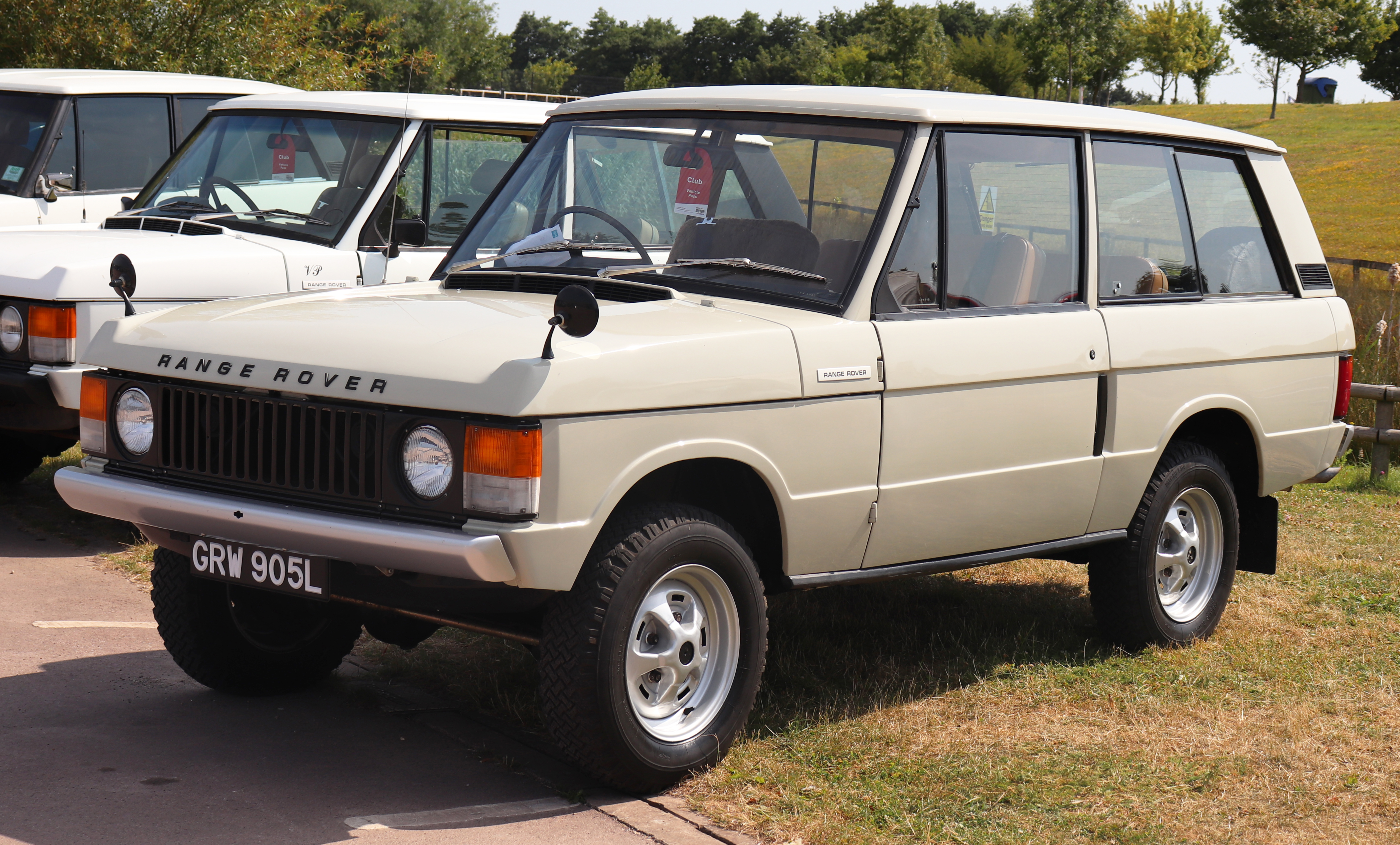
7. **Land Rover Range Rover (Older Models)**The Land Rover Range Rover, especially its older models, carries an undeniable aura of luxury, capability, and off-road prowess. For many, it represents the pinnacle of automotive sophistication and rugged elegance. However, mechanics, with their hands-on experience, often paint a more nuanced picture, frequently advising against certain older iterations due to their propensity for complex and costly problems.
Luxury vehicles, and older Range Rovers are a prime example, are often laden with an intricate web of sophisticated electronic systems and advanced components, such as air suspensions and complex infotainment units. While these features provide an unparalleled experience when the vehicle is new, they can become a significant source of complex, intermittent issues as the vehicle ages. These systems are often difficult to diagnose and even more challenging to repair.
The very complexity that defines these vehicles often translates into extensive repair bills. Mechanics highlight that diagnostic tools and specialized training are often required, pushing up labor costs. Moreover, replacement parts for high-end luxury vehicles are inherently expensive, and their availability can sometimes be limited, leading to longer repair times and further inconvenience for owners.
Beyond the electronics, older Range Rovers can also suffer from design flaws related to their powertrain and various auxiliary systems. These can lead to persistent mechanical issues that demand consistent attention and costly interventions. For owners, this often means a frustrating cycle of breakdowns and expensive trips to the service bay, undermining the initial allure of luxury and capability.
The high cost of ownership associated with frequent repairs and expensive parts means that what might seem like a bargain on the used market can quickly become a financial black hole. Mechanics caution that these vehicles, despite their iconic status, can turn into a constant source of stress, far outweighing their prestige or perceived value as they age.
Car Model Information: 2019 Volkswagen Atlas 3.6L SE
Caption: 2022 Range Rover SE P440e (L460, fifth generation, United Kingdom)
Aka: unbulleted list
Name: Range Rover
Manufacturer: unbulleted list
Production: 1969–present
Assembly: unbulleted list
Class: unbulleted list
Layout: Front-engine, four-wheel-drive layout
Sp: uk
Categories: 1980s cars, 1990s cars, 2000s cars, 2010s cars, 2020s cars
Summary: The Land Rover Range Rover, generally shortened to Range Rover, is a 4WD luxury mid to full size crossover marque and sub-brand of Jaguar Land Rover, owned by India-based Tata Motors. The Range Rover line was launched in 1970 by British Leyland and since 2022 is in its fifth generation.
Additional models have been launched under the Range Rover name, including the Range Rover Sport, Range Rover Evoque, and Range Rover Velar.
Get more information about: Range Rover
Buying a high-performing used car >>>
Brand: Land Rover Model: Range Rover
Price: $15,988 Mileage: 72,895 mi.
Read more about: 12 Cars Where Comfort Takes a Backseat: Owners Share Their Long-Drive Nightmares
8. **Volkswagen Passat (Certain Model Years)**The Volkswagen Passat has traditionally been a contender in the mid-size sedan segment, often appealing to buyers looking for European styling and a refined driving experience. However, mechanics specifically caution against “certain model years,” which suggests an inconsistency in its reliability track record. This variability makes it a challenging recommendation for those seeking consistent, trouble-free ownership.
For particular model years, the Passat has been known to exhibit tendencies towards recurrent mechanical issues that can quickly turn a comfortable daily driver into a frequent visitor at the repair shop. These problems can range from persistent electrical gremlins that are notoriously difficult to trace and resolve to specific weaknesses within the engine or transmission components. Such issues are often linked back to design flaws or the use of subpar materials during those specific production runs.
These inherent problems not only frustrate owners but also pose significant challenges for mechanics. Diagnosing the root cause of intermittent electrical faults or complex engine issues in these certain model years can be incredibly time-consuming, driving up labor costs considerably. Mechanics often spend extensive hours troubleshooting problems that might not have straightforward solutions, adding to the owner’s financial burden.
Furthermore, the replacement parts for some of these problematic components can be quite expensive, especially if they are proprietary to Volkswagen. This combination of lengthy diagnostic times, costly specialized repairs, and potentially higher parts prices results in a high cost of ownership for those unfortunate enough to own a Passat from these specific, problematic model years. It’s a classic example of how a vehicle’s initial purchase price can be deceptive when long-term maintenance is considered.
Car Model Information: 2022 Volkswagen Passat 2.0T SE
Name: Volkswagen Passat
Caption: Passat B9
Manufacturer: Volkswagen
Aka: Volkswagen Dasher,Volkswagen Quantum,Volkswagen Santana,Volkswagen Corsar,Volkswagen Magotan (China),Volkswagen Carat
Production: 1973–present
Class: Mid-size car
Layout: Front-engine, front-wheel-drive layout
Predecessor: Volkswagen Type 4,Volkswagen Type 3,Volkswagen K70
Successor: Volkswagen ID.7
Sp: uk
Categories: 1970s cars, 1980s cars, 1990s cars, 2000s cars, 2010s cars
Summary: The Volkswagen Passat is a nameplate of large family cars (D-segment) manufactured and marketed by the German automobile manufacturer Volkswagen since 1973 and also marketed variously as the Dasher, Santana, Quantum, Magotan, Corsar and Carat — in saloon, estate, and hatchback body styles.
A “four-door coupé” variant of the Passat with a lower roof was released in the North American market in 2008 as the Passat CC, which was then renamed to Volkswagen CC. The CC was succeeded by the Arteon in 2017.
In January 2011, Volkswagen introduced a separate Passat model line, internally designated “Volkswagen New Midsize Sedan” or NMS, that was manufactured in the US at the Chattanooga assembly plant and in China at Nanjing by SAIC-Volkswagen. Developed to increase Volkswagen sales in North America, the Passat NMS is larger and costs less to produce, and is sold in the North America, South Korea, China, and Middle East. The separate B8 Passat model entered production, based on the MQB platform.
In 2019, the Passat NMS program was split into two as the North American one continued being produced on an older platform while the Chinese Passat moved on to the MQB platform, which resulted in Volkswagen marketing three models under the Passat nameplate globally at that time. The North American Passat was discontinued after the 2022 model year.
Volkswagen ended the production of the saloon Passat for the European market in 2022. The B9 Passat, released in 2023, is only available in an estate body style. The Passat continues to be available as a saloon in China.
The “Passat” is one of several Volkswagen models named after a wind: “Passat” is the usual German word for “Trade winds”.
Get more information about: Volkswagen Passat
Buying a high-performing used car >>>
Brand: Volkswagen Model: Passat
Price: $16,210 Mileage: 76,970 mi.

9. **Mini Cooper (Early Models)**The Mini Cooper, particularly its early models, carved out a distinct identity with its iconic design and engaging, go-kart-like driving dynamics. It captured the hearts of many who desired a car with character and a fun-to-drive personality. Yet, for mechanics, those early models often represent a complex web of engineering choices that, while contributing to its unique feel, also led to a significant number of reliability challenges.
Early models of the Mini Cooper, while celebrated for their distinctive styling and agile handling, have frequently presented mechanics with challenges stemming from their compact engine bays and intricate engineering. The very design that makes the Mini so unique—a small car packed with performance—can also make routine maintenance and more complex repairs an arduous task. Hard-to-access components are a common complaint, turning what should be simple fixes into major undertakings.
Persistent mechanical and electrical issues, often tied to design flaws or components prone to premature wear, have been a recurring theme in these early iterations. This can include anything from widespread power steering pump failures to notorious timing chain issues, particularly in certain engine variants. Such problems are not only costly to address but also incredibly time-consuming, requiring extensive labor due to the cramped confines of the engine compartment.
The accumulation of these issues turns routine maintenance into an expensive and often frustrating ordeal. Owners of early Mini Coopers frequently face unpredictable breakdowns and a high cost of ownership that, unfortunately, overshadows the car’s initial charm and driving enjoyment. Mechanics often advise potential buyers that the unique allure of these early models comes with a significant and often expensive long-term commitment to upkeep.
Car Model Information: 2012 MINI Cooper S Base
Sp: uk
Caption: 1959 Morris Mini-Minor (first one built)
Name: Mini
Aka: Austin 850,Rover Mini,Austin Cooper,Austin Mini,Austin Partner,Austin Seven,Innocenti Mini,Leyland Mini,Morris 850,Morris Mascot,Morris Mini Minor,Riley Elf,Wolseley 1000 (South Africa),Wolseley Hornet
Layout: Front-engine, front-wheel-drive layout
Manufacturer: British Motor Corporation,British Leyland,Rover Group
Production: 1959–2000 (5.38 million)
Class: City car
BodyStyle: sedan (car),convertible,Station wagon,sedan delivery,coupe utility
Engine: BMC A-series engine,Straight-four engine
Designer: Alec Issigonis,John Sheppard (car designer)
Transmission: 4-speed manual,AP automatic transmission,5-speed manual (optional extra on some later models)
Length: cvt,cvt,cvt
Width: cvt
Height: cvt
Weight: cvt
Wheelbase: cvt,cvt
Related: Mini Moke,Austin Metro,Innocenti Mini,Mini Wildgoose,Mini Marcos
Successor: Austin Metro,Mini Hatch
Assembly: Panmure, New Zealand
Categories: 1960s cars, 1970s cars, 1980s cars, 1990s cars, 2000s cars
Summary: The Mini is a very small two-door, four-seat car, produced for four decades over a single generation, with many names and variants, by the British Motor Corporation (BMC) and its successors British Leyland and the Rover Group, and finally (briefly) under BMW ownership. Minis were built as fastbacks, estates, convertibles, and various other body styles. Minus a brief 1990s hiatus, from 1959 into 2000, an estimated 5.38 million of all variations combined were built, and the Mini’s engines also powered another 2 million Mini Metros, though the Mini eventually outlasted its successor.
Initially, the Mini was marketed under the Austin and Morris names, as the Austin Seven and Morris Mini-Minor; the Austin Seven was renamed Austin Mini in 1962 and Mini became a marque in its own right in 1969. Retrospectively, the car is known as the “Classic Mini” to distinguish it from the modern MINI family of vehicles produced since 2001 by German carmaker BMW, who took ownership of the Mini name following the sale of Rover Group in 2000.
This distinctive two-door car was designed for BMC by Sir Alec Issigonis. Its space-saving transverse engine and front-wheel drive layout – allowing 80% of the area of the car’s floorpan to be used for passengers and luggage – influenced a generation of car makers. The front-wheel-drive, transverse-engine layout were used in many other “supermini” style car designs such as Honda N360 (1967), Nissan Cherry (1970), and Fiat 127 (1971). The layout was also adapted for larger subcompact designs. In 1999, the Mini was voted the second-most influential car of the 20th century, behind the Ford Model T, and ahead of the Citroën DS and Volkswagen Beetle. It is also considered an icon of 1960s British popular culture.
The Mini Mark I had three major UK updates: the Mark II, the Clubman, and the Mark III. Within these was a series of variations, including an estate car, a pick-up, a van, and the Mini Moke, a jeep-like buggy. The performance versions, the Mini Cooper and Cooper “S”, were successful as both race and rally cars, winning the Monte Carlo Rally in 1964, 1965, and 1967. The Mini was manufactured in England at the Longbridge plant in Birmingham located next to BMC’s headquarters and at the former Morris Motors plant at Cowley, as well as in Australia (Victoria Park/Zetland BMC Australia factory) and later also in Spain (Authi), Belgium, Italy (Innocenti, as the Innocenti Mini), Chile, Malta, Portugal, South Africa, Uruguay, Venezuela, and Yugoslavia (IMV). In 1980, British Leyland launched the Mini’s follow-up, the Austin Metro, however the Mini outlasted it and continued to be produced at Longbridge until October 2000.
Get more information about: Mini
Buying a high-performing used car >>>
Brand: Mini Model: Cooper
Price: $7,987 Mileage: 103,968 mi.
Read more about: Investment Guide: The 14 Classic Cars That Have Consistently Appreciated by Over 50% in the Last Decade
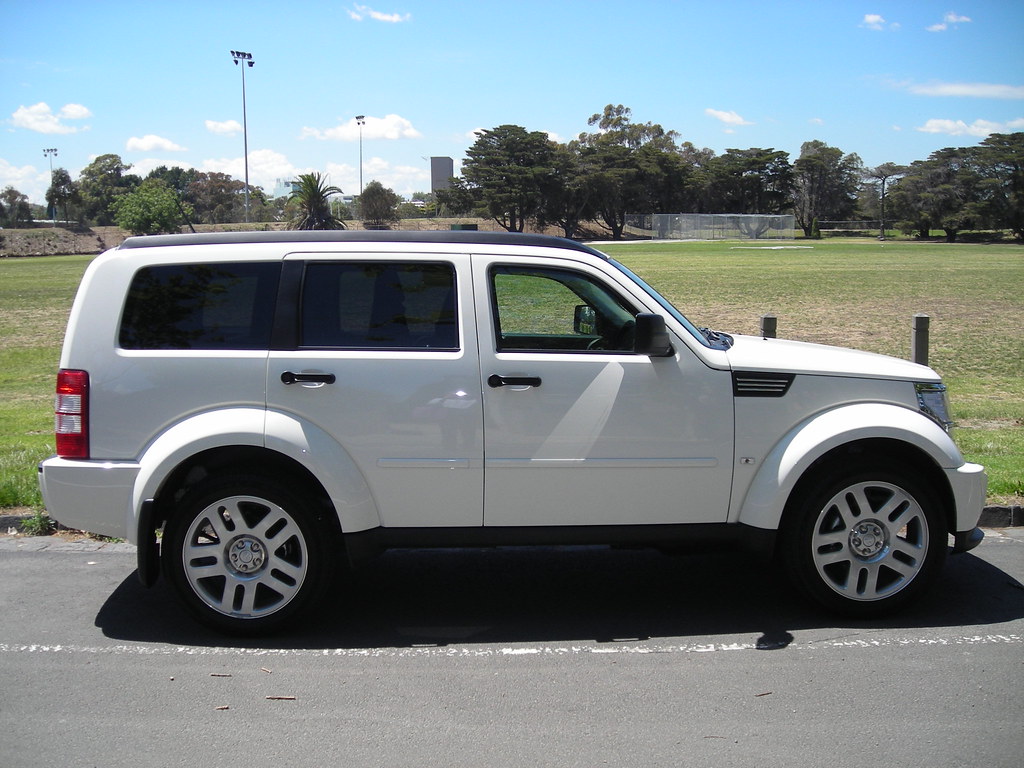
10. **Dodge Nitro**The Dodge Nitro, with its distinctive, rugged styling and somewhat muscular stance, aimed to carve out a niche in the compact SUV market. It offered a bold appearance that stood out from its more conventional competitors. However, despite its assertive looks, the Nitro is frequently cited by mechanics as one of the vehicles they would caution prospective buyers against, primarily due to its track record of reliability concerns.
Mechanics have often highlighted design flaws and poor build quality as significant contributing factors to the Nitro’s less-than-stellar reputation for long-term dependability. These issues can manifest in various ways, from premature wear of suspension components to problems within the powertrain that demand consistent attention. Subpar materials used in certain areas can lead to components failing sooner than expected, increasing the frequency of repairs.
Owners of the Dodge Nitro frequently encounter issues that demand consistent attention and often lead to costly repairs. These can involve everything from recurring electrical gremlins to problems with steering and braking systems, creating a cycle of frustration for the owner. The vehicle’s engineering choices, in certain areas, have unfortunately contributed to a pattern of unpredictability that can quickly deplete an owner’s patience and wallet.
The combination of specific design shortcomings and the resulting frequent repairs makes the Dodge Nitro a challenging vehicle for mechanics to work on and a frustrating one for owners to maintain. Its various issues exemplify the kind of car that often translates into a high cost of ownership over its lifespan, far outweighing its initial purchase price or its striking visual presence on the road.
**Final Thoughts on Navigating the Automotive Landscape**
So, there you have it: a deep dive into the vehicles that truly earn a mechanic’s seal of approval, and those that tend to send shivers down their spines. In a world brimming with choices, from sleek sedans to powerful pickups, the insights from those who spend their days under the hood are golden. They see the real story of reliability, not just the glossy marketing campaigns.
Choosing a car isn’t just about what looks good in the driveway or what feels speedy on the test drive. It’s about securing a ride that brings peace of mind, not pocket-draining problems. The champions we’ve highlighted offer that dependability, engineered for longevity and designed for straightforward maintenance. They’re the kind of cars that become faithful companions, humming along for hundreds of thousands of miles with just a bit of regular care.
Conversely, the vehicles we’ve cautiously flagged serve as a reminder that initial appeal can sometimes hide a multitude of future headaches. From intricate designs that lead to costly repairs to manufacturing choices that compromise durability, these cars can quickly turn the joy of ownership into a relentless quest for solutions. Mechanics witness this firsthand, and their warnings are rooted in countless hours of diagnostics and repairs.
Car Model Information: 2011 Dodge Nitro SXT 4×4 4dr SUV
Name: Dodge Nitro
Manufacturer: DaimlerChrysler
ModelYears: 2007–2011 (2012 fleet only)
Production: [object Object]
Designer: Dennis Myles (2004)
Class: Compact SUV
Related: Jeep Liberty,Jeep Grand Cherokee (WK),Jeep Commander (XK),Jeep Wrangler (JK)
Assembly: Toledo, Ohio,United States
BodyStyle: SUV
Wheelbase: 108.8 in
Abbr: on
Length: 178.9 in
Width: 73.1 in
Height: 69.9 in
Weight: 4162 lb
Layout: Longitudinal engine,Front-engine, rear-wheel-drive layout,rear-wheel drive
Platform: Chrysler KA platform
Engine: Chrysler PowerTech engine#3.7 EKG,SOHC,V6 engine
Transmission: Chrysler (brand),Chrysler NSG370 transmission,manual transmission
Categories: 2010s cars, All-wheel-drive vehicles, All articles with failed verification, All articles with unsourced statements, Articles with failed verification from January 2017
Summary: The Dodge Nitro is a compact SUV manufactured and marketed by Dodge for model years 2007–2012 across a single generation — as a close variant of the second-generation Jeep Liberty. Both vehicles use a composite unitized construction integrating the body structure with full-length frame rails.
The Nitro entered production in August 2006 aside the Liberty at the Toledo North Assembly Plant in Toledo, Ohio and was offered in a single, four-door body configuration. Like the Liberty, it was manufactured in RHD and LHD configurations, and marketed globally. Sales commenced in September 2006 for model year 2007 in rear-wheel drive or optional and part-time four-wheel drive. Approximately 200,000 Nitro models were manufactured before production ended in December 2011.
Get more information about: Dodge Nitro
Buying a high-performing used car >>>
Brand: Dodge Model: Nitro
Price: $6,995 Mileage: 142,474 mi.
Read more about: Dodge’s Commercial Failures: 18 Cars That Flopped
Ultimately, whether you’re eyeing a brand-new model or sifting through the used car market, remember to listen to the experts who know these machines inside and out. Their real-world experience, detached from sales pitches, offers the clearest path to a smart, cost-effective decision. Pick a car that’s built to last, designed for honest work, and won’t surprise you with endless repair bills. Your wallet and your sanity will thank you for it. Go forth, drive smart, and enjoy the ride!

